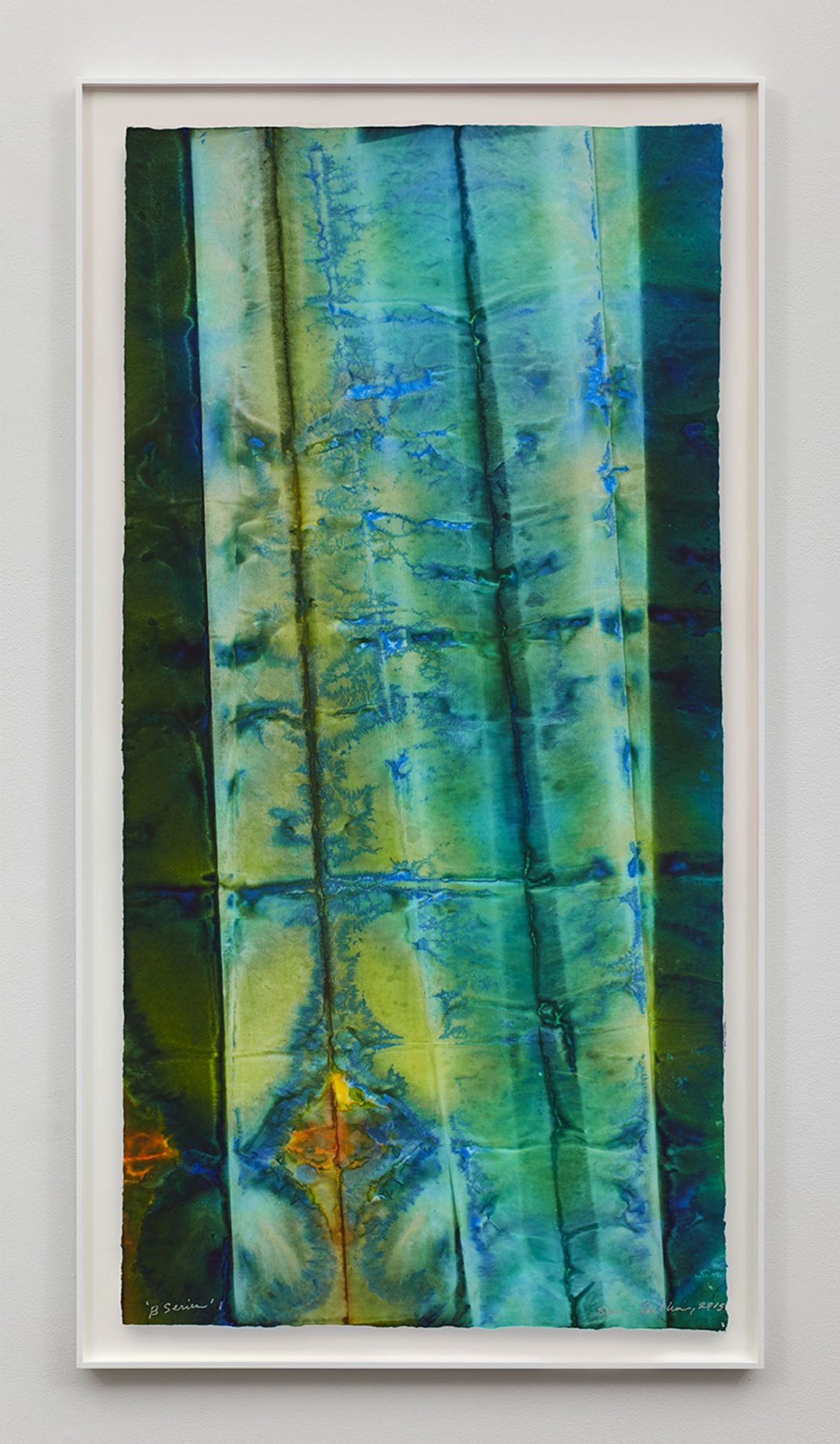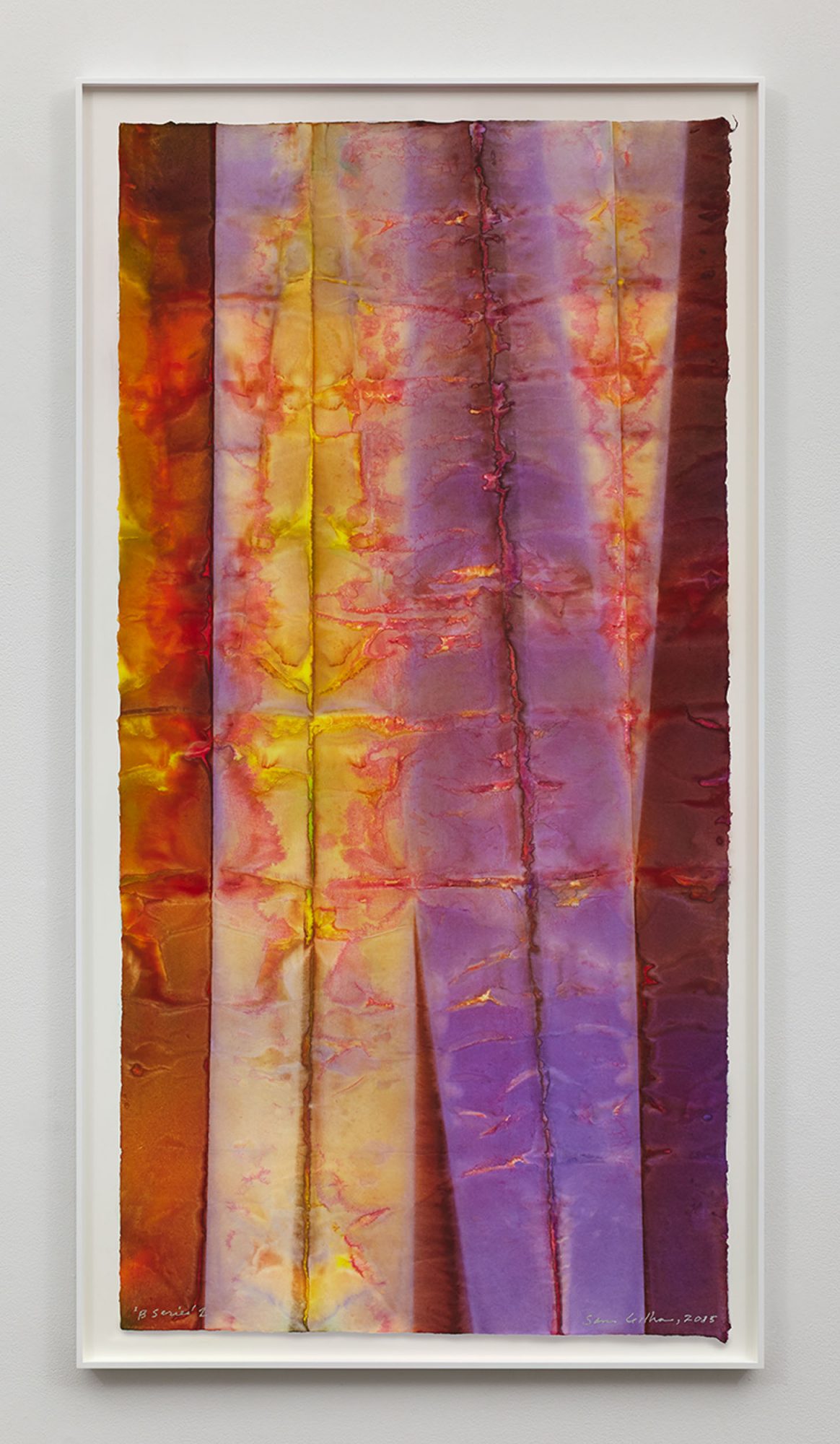Sam Gilliam
— The Arts Club, London
Sam Gilliam, (P.A.C.), And Then, 1970, Acrylic on canvas

Tap to view slideshow
A major figure in postwar American art, Sam Gilliam is a key pioneer of the colour field painting movement whose experiments with shape, stains, process, pouring paint and draping canvas forged new directions in art history. Inspired by artists as diverse as Frank Stella, Picasso and Cézanne, Gilliam is associated with the Washington Colour School that also includes such artists as Morris Louis and Kenneth Noland. Now in his 80s and continuing to produce new work, Gilliam’s career extends over half a century. He represented the US at the Venice Biennale in 1972.
This exhibition focusses on the large-scale bevelled-edge pieces with which Gilliam launched his career from around this period in the 1970s, alongside new works on paper. Created from accordion-folded, un-primed canvasses, these early paintings are first soaked in acrylic paint, allowing the pigment to be absorbed by the fabric. Once dry, Gilliam then unfolds the canvas and stretches it over a bevelled-edge frame. This gives the paintings a sculptural quality as they appear to emerge from the wall with a kind of material physicality.
Born in 1933, in Tupelo, Mississippi, Gilliam lives in Washington D.C.. His work features in the collections of many major institutions worldwide, including the Museum of Modern Art, New York; Tate Modern, London; The Art Institute of Chicago; Hirshhorn Museum and Sculpture Garden, Washington, D.C.; Musée d’Art Moderne de la Ville de Paris; Los Angeles County Museum of Art; Dallas Museum of Art; Walker Art Center, Minneapolis; Metropolitan Museum of Art, New York; and the Solomon R. Guggenheim Museum, New York. A major retrospective was held at the Corcoran Gallery of Art, Washington, D.C. in 2005.
The exhibition is curated by Amelie von Wedel and Pernilla Holmes of Wedel Art.




